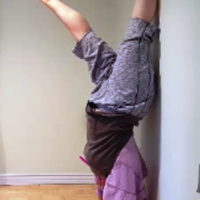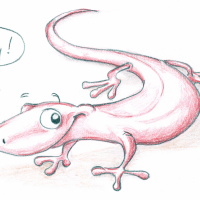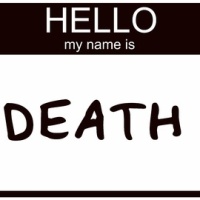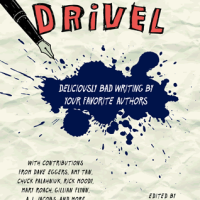When I started taking classes from my writing teacher, mentor, and now friend Laurel Leigh (perhaps you’ve heard of her?), she gave me some of the best writing advice I’ve ever gotten.
Fortunately, I completely disregarded it.
Before I tell you what her advice was, why I ignored it, and why that turned out to be a good thing, let me provide some background for the subject matter: writing in multiple Point of View (POV), or as I like to call it, expressing your multiple personalities in a single work.
I grew up reading epic fantasy, and I’ve known since I was a teenager that this was the genre I wanted to write. If you aren’t familiar with the genre of epic fantasy, I’ll give you the briefest introduction. Basically, the hero always has nothing less than the fate of the entire world on his or her shoulders. Picture Frodo attempting to drop the ring into the cauldron of lava in Mordor while everyone he cares about fights for their lives. No pressure, right?
In order to succeed in such a monumental task, the hero needs a large and competent cast of supporting characters. Would Frodo have succeeded without Samwise? I don’t think so. Gandalf, Aragorn, and Legolas played important roles too, among others. In epic fantasy, the battle is always fought on several fronts.
Because the hero can’t be present on all these fronts at once, epic fantasy is often written in multiple points of view. In one scene, we’re in Frodo’s POV as he inches toward the cauldron; in the next, we’re with Gandalf, holding back the orc army in the last ray of light left on Middle Earth.
Now, the advice Laurel gave me was this: Don’t attempt to write your book with six-plus POV characters. Find your hero—she might not even be the hero you have marked out as the main character—and tell her story.
Given my background with epic fantasy, these words broke on barren shores.
I should start by saying that Laurel was absolutely right. I would have had a much easier time, and probably produced a much better first novel, if I had followed her advice. I should also mention that I have followed, or tried to follow, at least 90% of the advice Laurel gives me, with winning results every single time.
Unfortunately for me, epic fantasy is what I wanted to write. I needed to start there.
I should also add that there have been several incredible epic fantasy tales told with a single point of view. In fact, my favorite author, Robin Hobb, uses single first person POV in her first work, the Farseer Trilogy. So multiple POV isn’t a rule of the genre, though it is the norm.
When I told Laurel this, those many years ago, she replied that it may be a convention in the genre, but that doesn’t matter. You should tell the story the way the story needs to be told.
Again, she was absolutely right, and again I ignored her advice, but her response got me wondering why so much epic fantasy is written in multiple POV. To be honest, before she suggested maybe I should scale things back, I hadn’t really considered writing in any other format.
The answer I come up with is this: multiple POV epic fantasy novels are actually the story of several different characters woven into one book, united by plot and setting. Through this method, the writer explores the implications of the main event (usually, but not always, the end of the world, or some great and final battle) on the various POV characters.
The benefit for the reader is that they can experience several different personalities under the same conditions. The farmboy becoming the prophesied hero experiences the dramatic arc differently from the wise old magician, who experiences it differently from the inexperienced young battle Queen. As a reader, I can experience the same story in a variety of different ways. It’s like the difference between ordering off the menu and exploring the buffet.
One of my favorite things about this kind of epic fantasy is how opinionated readers get about the characters. Even when all of the “good” characters are drawn as sympathetic by a given author, all of them have their haters on the online fantasy forums. Entire threads are devoted to tearing apart these characters, evidence perhaps of how deeply epic fantasy writers are engaging their readers using multiple points of view.
For a writer, the benefits of writing in multiple POV are many, but so are the pitfalls.
One of the greatest benefits is information management. While you never want to add a character solely as a vehicle for information, having multiple POVs can make it really easy to show the reader information that the main characters don’t have access to, like the villain’s plans and motives, or a traitor’s intent, or the existence of a potential ally. These tidbits can go a long way toward building suspense.
Another benefit is the ability to show the battle, both figuratively and metaphorically, being fought on several fronts. When single POV authors struggle with how to show action happening in the main character’s absence, this is never a problem for multiple POV authors. If I need to show what is happening in a whole different part of the world, I can just move the camera there.
For me, however, the greatest benefit is a deeper one, one intrinsically tied to why I write in the first place. No matter how well-drawn a single character is, with all her flaws and qualities, she can never fully represent a human being. When I write, all of the characters in my story are facets of myself, even the villains. And when I draft in a given POV, I’m exploring that part of myself.
The same happens for me when I read multi POV epic fantasy. By experiencing the story through the different facets that make up the whole human experience, I understand and recognize parts of myself. For example, the villain may represent my darkest desires; the crone may represent my inherent wisdom, the hero my desire to be fearless, the soldier my need for control.
You may be asking at this point, if multiple POV works so well for this genre, why does anyone write epic fantasy with a single POV? Having never attempted it, I can’t speak to that. But I do notice that the Farseer Trilogy uses some techniques to get around having only one POV character.
First, it is written as if the main character is an old man, recounting the events from his youth. With this device, the author is able to add in information that the character would not have known during the action, solving the information management dilemma.
Second, the stakes in the Farseer Trilogy have far-reaching consequences, but at the same time, they are very focused. The story is focused on one country, not several, and on one conflict between two groups. Essentially, the battle is fought on one front by the main character, so there is no need to show the other fronts. And when there is a need to reference events the character isn’t present for, the author does so through the character recalling events.
Finally, the main character in the Farseer Trilogy is a very sensitive, intuitive, and flawed individual. While he can’t represent all facets of the human being alone, he does see deeply into the other characters to draw the facets they represent to the surface. The fact that the narrator is looking back on the events and the nature of the people he knew then accentuates his ability to reveal the true nature of the other characters.
Now, onto the pitfalls. *Rubs hands gleefully*
Laurel’s advice to stop living in a million characters and focus on the story of one character did not come out of nowhere. Multiple POV can devastate a story if done poorly. Here are just a few ways you can screw it up:
Hero Confusion
This can happen when your supporting cast is so strong that your hero gets lost in it. Sometimes there is another dominant personality trying to steal the show. Sometimes everyone seems like the hero. But it doesn’t work this way. Epic fantasy needs a clear hero. The reader needs to know who that is from the very beginning, and know that the stakes are higher for that one person than for anyone else in the story.
If your hero is getting lost in the rest of the cast, you need to do something to bolster her. What characteristics can you give her to distinguish her? Are there opportunities you aren’t giving her, challenges she doesn’t have a chance to rise to? Is someone else really the hero of the story, and do you need to make a switch?
Quantity, not Quality
One of the biggest pitfalls of juggling a huge cast of POV characters is that the writer can start to dilute their characters too much. There can be no stock POV characters. You need to do the same groundwork on each and every POV character as you’ve done on your hero. When the reader reads a given POV, they need to BE the character, feeling what she feels, knowing what she knows, seeing what she sees. If your POV characters all feel a little incomplete, make sure you’ve done the background “research” on every single one of them.
Double Duty
If the POV characters represent the facets of a complete human being, then they all need to be distinct. It can be easy to overlap, and not just with the hero. Are all of your characters wise old guides, when you only need one? I think what can happen is that writers tend to craft their characters in the facet that they are most comfortable with. Make sure that all the aspects of the human experience are represented in your characters, not just the ones you are comfortable with.
Sounds the Same
If you’ve done your job well, the reader should be able to tell that you’ve transitioned to a new POV character without a tag (a heading with their name, for example). It’s ok to tag—George RR Martin, a master of multiple POV, does it, and most epic fantasy writers only switch POV by chapter. Even so, you need to make sure the characters sound distinct, that their thoughts, their voices, their actions reflect their experience and personality.
Plot Muddle
When you write in multiple POV, you are basically taking a bunch of different stories and braiding them together into one. Your characters will cross paths intermittently throughout the story; sometimes their action will come together, sometimes it will veer far apart. It can be extremely confusing to keep this all together. You can lose track of the overall plot, and you can lose track of each character’s emotional journey.
Here’s some final advice for managing this mess you’ve gotten yourself into by not listening to your writing teacher:
- Plan out each character’s emotional journey and their action plot, even where it overlaps with other characters, before drafting.
- Write each character’s scenes all at once, starting with the hero. (Always start with the hero. This is ultimately their story. They need to have the very most at stake in the final conflict, physically and emotionally.)
- As you write, the other characters’ stories will cross paths with the hero’s story. You’ll want to start rendering the action of the character’s plot from other POVs, but think carefully about when and why you switch POV.
- At some point, the other characters’ scenes will veer from the hero’s. Keep writing the hero’s POV until you get to the end of his or her plot line. Then, go back and finish up the other POVs.
When I write, I keep each different POV scene on a different page in Scrivener (you can do something similar in Word by using headings and the navigator pane). This way I can shuffle scenes around. When I’m done drafting each character’s arc, I braid the scenes together to form the whole novel.
When I edit, I often put the scenes of a given POV character back together, in order to make sure their whole story line is continuous. It depends on how widely it veers from the main plot line.
As you can imagine, I’m already planning my next epic fantasy series to be a single, first person POV (I’m sure Laurel will be happy to hear it)! Of course, there are plenty of ways to mess that up just as badly as multiple POV. Maybe someday, I’ll write a normal novel and realize how much easier it is. Till then, I’ll keep rising to the challenge of telling the tale of the battle on many fronts with epic fantasy.
What’s the biggest challenge you’ve encountered when experimenting with different kinds of POV? Leave a note in the comments!
Selah J Tay-Song is living proof that if you persevere, you’ll catch your dreams. She decided to be an author at the age of six. It took her 25 years to learn how to write a book. Today she is the author of the award-winning Dreams of QaiMaj series, described as magical, poetic and engrossing. When she’s not writing epic fantasy, Selah blogs about everything she wished she knew before she wrote her first book. When she’s not writing, Selah is stalking the urban river otters that live near her home in the Pacific Northwest.
 Follow Selah on the interwebs:
Follow Selah on the interwebs:
website: http://www.selahjtaysong.com
Amazon: http://www.amazon.com/Selah-J-Tay-Song
Twitter: https://twitter.com/selahjtaysong
Facebook: https://www.facebook.com/selah.taysong
Pinterest: http://www.pinterest.com/selahjtaysong
Goodreads: https://www.goodreads.com/Selahjtaysong
Check out Selah’s latest book, Dream of a City of Ruin, available March 20th, 2015! The tale of QaiMaj continues in this gripping sequel to Dream of a Vast Blue Cavern:
War simmering for three thousand years is poised to explode on the surface of QaiMaj. The outcome might free the scattered survivors of an ancient disaster from tyranny, or destroy them forever.
Torn from familiar caverns in the midst of her own war, stranded in the icy lands of Khell, Queen Stasia of Iskalon knows nothing of the conflicts shaping QaiMaj. Her only guides are legends told by a Khell Healer and her own prophetic Dreams of her people suffering in a dark, ruined city. Unwillingly allied with the man who destroyed everything she holds dear, struggling to define her identity in the face of so much loss, stalked and assailed by death-hungry Dhuciri, Stasia sets out across the vast wastelands of QaiMaj to reach the city of her Dreams.
But Svardark, the ruling dynasty on QaiMaj, already knows she has surfaced, and they will stop at nothing to find her in . . .
Dream of a City of Ruin
Dreams of QaiMaj Book II


















I am exhausted just reading about all that juggling. You’ve got my undying respect. I did not grow up reading fantasy, so I shut the barn door after the horses had already escaped. That said, you make me want to run through the woods looking for them before they get turned into something else.
Your points are well thought out and applicable to any other genre where an author is considering multiple POVs, so I thank you for the analysis.
Good luck with your launch! Cheers!
I long ago went from being your teacher to your fan, Selah! I love this post, and I’m so excited to read book 2 in this fantastic series. Congrats on today’s launch! I can’t believe I’m saying this, but I do think Icers exist. I’m pretty now sure that they do.
LOL k, I’ll add fan to the list, although my favorite is friend : ) Thanks so much, I feel like a proud parent today!
And of course Icers exist. Who would stand against Chraun if they didn’t?
True that!